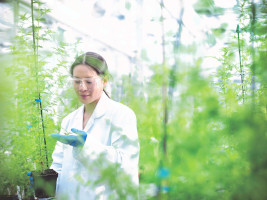
Don Shelly
In our post last week we discussed the Federal Register 7 CFR Part 990 "Establishment of a Domestic Hemp Production Program" and sections discussing U.S. interstate transportation and shipping. This week we will look at the same publication in terms of THC determination. Here are some snippets of useful information taken from 7 CFR Part 990.
7 CFR Part 990, Section II. B. Sampling and Testing for Delta-9-Tetrahydrocannabinol
• Testing procedures must ensure the testing is completed by a laboratory using a reliable methodology for testing the THC level. The THC concentration of all hemp must meet the acceptable hemp THC level. Samples must be tested using post-decarboxylation or other similarly reliable analytical methods, where the total THC concentration level reported accounts for the conversion of delta-9-tetrahydrocannabinolic acid (THCA) into THC. The total THC, derived from the sum of the THC and THCA content, shall be determined and reported on a dry weight basis.
• The National Institute of Standards and Technology (NIST) Reference on Constants, Units, and Uncertainty states that ‘‘measurement result is complete only when accompanied by a quantitative statement of its uncertainty. The uncertainty is required in order to decide if the result is adequate for its intended purpose and to ascertain if it is consistent with other similar results.’’
Simply stated, knowing the measurement of uncertainty is necessary to evaluate the accuracy of test results. For example, if a laboratory reports a result as 0.35% with a measurement of uncertainty of +/- 0.06, the distribution or range is 0.29% to 0.41%. Because 0.3% is within that distribution or range, the sample, and the lot it represents, is considered hemp for the purpose of compliance with the requirements of State, Tribal, or USDA hemp plans.
• Laboratories should meet the AOAC International standard method performance requirements for selecting an appropriate method.
Please reference the entire 7 CFR Part 990 for complete details.
In our next post we’ll be moving beyond THC and the determination of legal hemp, to explore safety concerns with heavy metal toxicity in producing safe hemp.
If you need a consistent source of cannabinoid certified reference materials for your hemp testing, please visit our cannabinoids page on our web shop.
